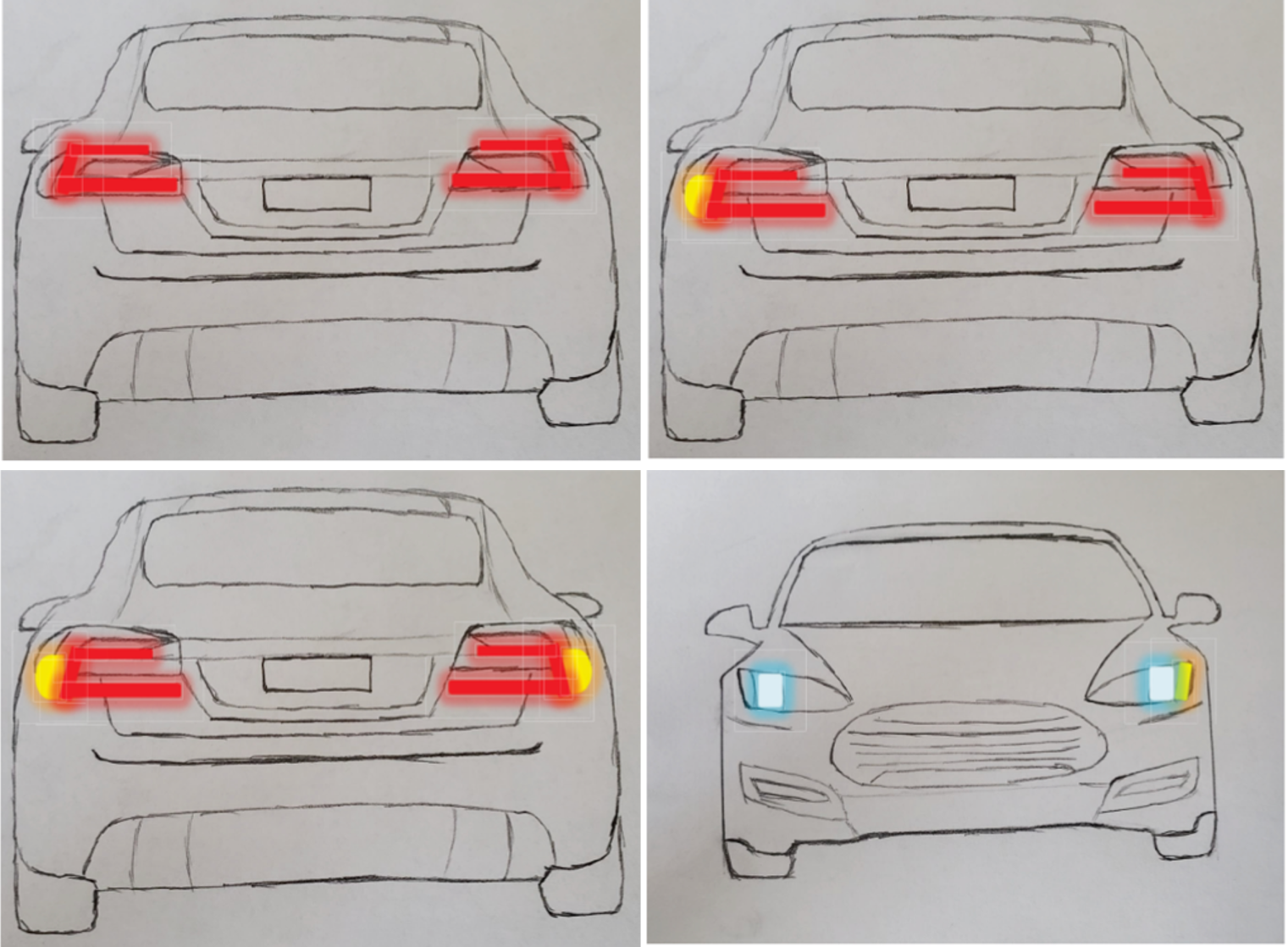This biologically inspired connected advanced driver assistance system (BICADAS) leverages phenomena common in the animal kingdom to improve vehicle crash avoidance. Georgia Tech’s software-based innovation provides a logical progression to improvements in currently available capabilities by connecting ADAS among vehicles and fixed systems and contributing to the goal of development of autonomous vehicles. The system can also be used to provide significant crash avoidance improvements among non-connected vehicles as well.
An affordable software upgrade to improve collision avoidance using existing vehicle infrastructure
The software-based innovation leverages the animal wisdom of aposematism and bargaining. Aposematism is a biological system in which a hunted animal employs visual anti-predator signaling to warn the predator that an attack will likely result in negative outcomes for the aggressor. The BICADAS provides aposematism-inspired operations to connect vehicles using existing ADAS infrastructure (e.g., front and rear vehicle sensors, cameras, turn and brake lights, etc.) and interface circuitry (e.g., relay logic controllers, wiring, etc.). For instance, the BICADAS can deploy a vehicle’s front and rear sensors to actively monitor the area around the vehicle to determine, signal, and take corrective action if another vehicle is approaching too quickly, following too closely, rapidly slowing down, etc.
The system employs bargaining among the vehicles to find the best course of action, taking into account whether each vehicle is using an active system (e.g., the vehicles are connected via BICADAS or ADAS) or passive (e.g., no ADAS capabilities). The system could visually signal an aggressive driver of a non-connected vehicle to slow down and/or move away, while connected vehicles could transmit information about speed and following distance to signal drivers to the correct action or take autonomous action if the driver does not respond appropriately.
Inspired by forms of visual signals used in biology (e.g., those with high contrast and those with changing patterns/blinks vs static patterns are better detected), the BICADAS can provide distinct light patterns and flashes to indicate available lane changes or other directions to avoid a crash. These capabilities are designed to provide faster driver reaction to improve crash avoidance. In addition, while ADAS in general may help to decrease travel times and reduce traffic congestion (and thereby reduce carbon emissions), the BICADAS helps to augment these benefits through the inclusion of traffic bargaining and negotiation where current collision avoidance tools are limited to emergency braking. BICADAS can often be implemented with inexpensive software upgrades. In fact, by leveraging existing ADAS systems, BICADAS can be implemented in 20% of vehicles already on the road and other vehicles can typically be upgraded to include the system for less than $500. This would allow vehicle manufacturers to avoid major hardware or technology upgrades – an important consideration given studies indicating that ADAS technologies typically cost more than consumers are willing to spend on them (Source: Boston Consulting Group, 2015).
- Cost-effective: Leverages existing vehicle infrastructure (e.g., sensors, lights) along with an affordable software upgrade to provide enhanced collision avoidance capabilities, typically for less than $500
- Safety-enhancing: Designed to help prevent up to 94% of automotive crashes by providing reduced lag time and enabling faster driver reaction rates
- Convenient: Aims to optimize vehicle travel speeds and reduce traffic congestion and travel times
- Connectivity agnostic: Enables vehicles to take smart actions and transmit useful signals to help avoid crashes, regardless of whether other vehicles are equipped with BICADAS, ADAS, or no ADAS capabilities
- Intuitive: Relies on vehicle tools that drivers already are familiar with and know how to use
- Environmentally friendly: May help to reduce carbon dioxide emissions by reducing traffic congestion and travel times
- Personal automobiles
- Autonomous vehicle development
- Commercial fleet vehicles

Examples of signaling with BICADAS, clockwise from upper left: slow down indicated by having the brake lights flash; slow down signal + left turn light solid to indicate the left lane is available; slow down signal + both turn lights solid to indicate lanes to both the left and right of the vehicle are available; high beams flashing to indicate too close to the vehicle in front of them, and left turn light solid to indicate the left lane is available
